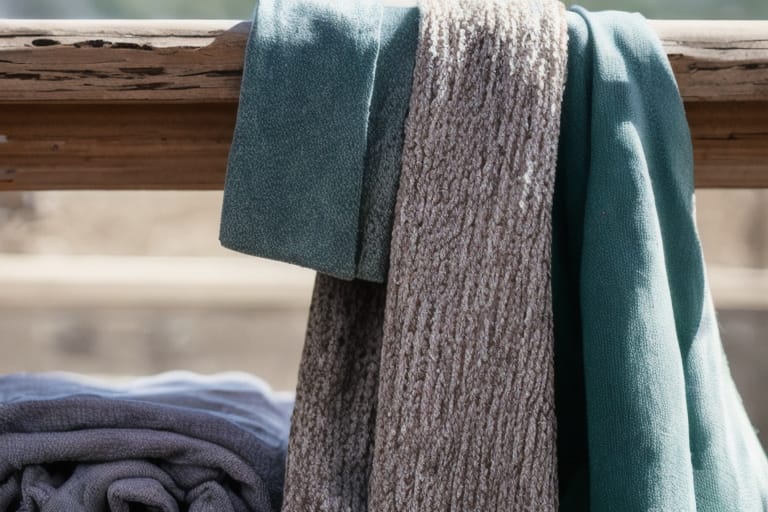Do you love snuggling under the warmth and softness of your down comforter, only to later find it flat and lackluster? A flattened down comforter not only looks unappealing but also impacts its ability to properly insulate and adjust to your body shape for maximum comfort.
The good news is that with some diligent care, you can restore the luxurious loft and cozy comfort of your down bedding. This beginner’s guide will teach you everything you need to know about caring for down, common issues like flattening, and tips to improve lifespan. Ready to revive your bedding? Let’s get started!
What Exactly is Down and How Does it Provide Warmth?
Before we dive into maintenance tips, let’s review some down comforter basics.
Down refers to the fine, fluffy clusters and plumules that make up the underside of waterfowl feathers. This superior insulator is valued for its impressive warmth-to-weight ratio and spectacular loft power that creates a cushy cushion of comfort.
The fluffy filaments of down trap air between them. More trapped air means more insulation and warmth. Think of down comforters as big air pockets that allow you to sleep cozy all night long.
Why Does My Down Comforter Get Flat?
There are a few key culprits that cause a down comforter to go flat:
1. Regular Use and Compression
The simple act of sleeping under your comforter flattens and compacts the fill over time. Tossing, turning, and pressing into the fill compacts the insulation. After months or years of use, the loft breaks down.
2. Improper Washing
Excessive water, harsh detergents, and high heat during cleaning can strip the natural oils from down and cause it to compress. Always follow the care instructions for washing bedding cautiously.
3. Poor Storage
If not stored properly between uses, the weight of a comforter can cause the fill to compress against itself. Storing in an overstuffed closet or chest can damage loft.
The Impact of a Flat Down Comforter
A flattened down comforter not only looks less appealing as a bed covering, but also suffers impaired functionality. Here are some of the biggest issues caused:
- Reduced insulation. When down filaments compress, the trapped air pockets between them disappear. This greatly reduces the ability to retain and circulate warmth.
- Less comfort. The cushiony loft of down comforters allows them to conform to your body shape as you sleep. As they flatten, they lose this soft, customizable comfort.
- More heat loss. A thinner comforter allows more opportunity for your body heat to escape off the sides of the bed. A fuller shape better contains heat near your body.
- Decreased durability. Over-compressed down eventually damages the feather structure itself. This can shorten the lifespan of your comforter.
So in summary – you NEED loft for warmth, coziness and long-term performance!
How to Tell if Your Down Comforter is Losing Loft
It’s easy to notice when your down comforter starts to slim down. Look for these signs:
- Thinner overall appearance
- Less fluffy, more flat visually
- Comforter no longer “puffs up” between uses
- Needs more shaking out to temporarily regain loft
- Feels less warm next to your body
- Struggles to maintain shape overnight
Don’t wait until your comforter has completely flattened! As soon as you suspect even moderate loft loss, it’s time to take action.
Proper Care: Stopping Flattening Before it Starts
Caring properly for your down bedding from the start will help prevent severe compression issues down the road. Follow these best practices:
1. Allow loft recovery time
After each night’s sleep, make sure to shake out your comforter vigorously and allow it several hours to “re-fluff” before making the bed. This gives the fill time to spring back and traps less air long-term.
2. Air out regularly
Every 2-4 weeks, allow your comforter to drape over a clothesline, furniture, or banister for a few hours. This allows the whole thing to breathe and prevents lasting creases.
3. Wash occasionally
Down comforters only need cleaning every year or so. When washing, use a front-loading machine, mild soap, and low heat. Refer to care instructions for specifics.
4. Store properly when not in use
During warmer months, store comforters in breathable garment bags. Never cram them compressed into small spaces.
Now that you know how to be proactive, what’s next if your comforter is already flat? Time to get reviving!

Best Practices For Reviving a Flat Down Comforter
If your down bedding is already losing shape, there are several revival methods to try:
Fluff Vigorously by Hand
Start by vigorously shaking out all sides of the comforter by hand – outside, inside, horizontal, and vertical. Stand in an open outdoor area for best results. Shake 10-15 times per side.
Use Tennis Balls in the Dryer
Add 2-3 tennis balls to the dryer along with your comforter on air fluff or no heat for 15-20 minutes. The pounding motion helps release trapped air.
Air Out Fully
Lay comforter fully open on a flat, clean surface. Use fans directed under and above to air out for 4+ hours. Flip periodically. Weight down the edges if needed.
Consider Professional Service
For severely matted comforters, professional fluffing services use commercial machines for maximum revival. Price averages $55 per king-size comforter.
Evaluate Fill Power
Higher quality down with 600-800 fill power is more resilient and long-lasting. If your comforter flattens rapidly, low fill power could be the cause.
Be patient and repeat these steps multiple times until your down regains body and thickness. It can be done with a little TLC!
Differences Between Down Types
Not all down is made equally when it comes to durability and maintaining loft. Here is how the two main types compare:
White Goose Down
- Highest quality, premium down clustering
- Larger filaments create exceptional loft
- Longest lasting, retains maximum loft over years of use
- Most expensive type
Grey Duck Down
- Smaller, more broken-up filament structure
- Still offers good insulation at lower price point
- Durability decreases compared to goose down
- Loses loft quicker over time
Takeaway: Splurge on white goose down for best longevity and less flattening.
| Down Type | Average Lifespan | Compressor Resilience | Overall Rating |
|---|---|---|---|
| White Goose Down | 12-15 years | Excellent | 5/5 |
| Grey Duck Down | 7-10 years | Good | 3.5/5 |
Storing Your Down Comforter Long Term
Another contributor to down damage and flattening is improper storage between winter and summer seasons. Use these best storage practices:
- Vacuum seal in an airtight container or breathable garment bag
- Avoid overly compressing or cramming
- Store in cool, dark place like closet shelf or underbed
- Wash and air out before storing to reduce odors or moisture
- Usage only 2-3 times per year prevents excessive breakdown
Top-Rated Breathable Garment Bags
| Brand | Price | Rating | Key Features |
|---|---|---|---|
| Storage Works Jumbo | $17 | 4.8/5 | Extra large, mesh panels |
| Lifewit Garment Bag XL | $23 | 4.6/5 | Waterproof, reinforced seams |
| Simple Houseware Jumbo | $20 | 4.3/5 | Clear window, shoulder strap |
These breathable bags allow air circulation while preventing dust and moisture damage during off-season down comforter storage.
Extend Your Down Comforter’s Lifespan
Want your down comforter to last for years without flattening issues? Implement these care practices:
- Fluff after every use
- Wash max 1-2 times per year
- Air out every 2 months
- Store properly off-season
- Repair small rips and holes promptly
- Add fill as needed over time
- Invest in quality materials upfront
Caring consistently for your down comforter is the key to keeping it in top condition!

Frequency Asked Questions
Still have some lingering questions about caring for your down bedding? These answers should help!
How often should you wash a down comforter?
Only 1-2 times per year, according to experts. Frequent washing strips the oils from down and causes premature breakdown.
Why does my down comforter get lumpy?
Moisture exposure and improper drying can cause down to clump together instead of fluffing up nicely. Always ensure 100% dryness after washing.
How can you make a down comforter fluffy again?
Vigorous shaking, air drying fully, using tennis balls in the dryer, and sometimes professional fluffing services can re-loft flattened down bedding.
What is the best way to store a down comforter?
Store in a breathable garment bag in a cool, dark place like a closet shelf or under the bed. Avoid excess compression and humidity exposure.
How long do white goose down comforters last?
With proper care, a white goose down comforter will last 12-15 years before needing replacement. This high durability makes them a worthwhile investment.
Should you store down comforters in plastic?
No, plastic causes moisture buildup that can damage loft and promote bacterial growth. Breathable fabric like cotton or mesh is best.
Conclusion: Treat Your Down Right!
I hope this beginner’s guide gave you all the basics for understanding down comforter care – from learning why they flatten in the first place to actionable revival tips. Just remember a little TLC goes a long way when it comes to restoring loft and maintaining the comfort you love.
Next time your down bedding goes flat, use these best practices to fluff it back up again. With some attention, your comforter will keep you cozy for over a decade! Now you can rest easy and nestle into luxurious comfort night after night.








